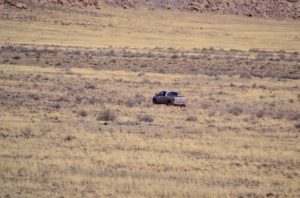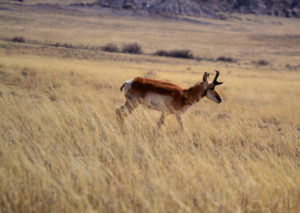Massive Mineral & Renewable Energy Development Potential
Like many other raw land investing opportunity, the Twin Buttes Ranch (TBR) in Arizona has countless development opportunities.
The difference between TBR and other, smaller, raw land investment options is that, with 60 square miles of country, there’s no need to limit development ambitions to one, two, or even three valuable options.
TBR also offers a unique opportunity to create a high-value potash mine, much-needed clean energy farms, and still protect some important historic and archaeological resources.
Although potash mining is the biggest and most viable investment opportunity on TBR, new technology allows mining this precious resource to be minimally damaging to the surface – limited to just an acre in some cases. Likewise solar or wind energy development can be created to be minimally harmful to livestock and wildlife.
Shallow Potash Deposits
Potash, or water-soluble salt and potassium, is used as vital ingredient in fertilizer, and is mined around the world. These mining efforts have often been hindered and rendered very expensive by the depth at which most potash deposits occur – often starting at 4,400 feet in depth.
Twin Buttes Ranch, however, has a thick layer of highly pure potash that’s viable for mining at just 800-1,200 feet. These are some of the shallowest depths in the world.
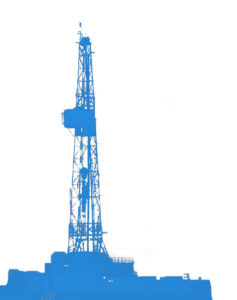
Salt Water Aquafer
Twin Buttes Ranch also has a saltwater aquafer underground.
Ironically this has always made any attempts at agricultural development difficult, including ranching – since all fresh water must be saved from rainfall in dirt stock tanks, or pumped from river sand.
However, it turns out that salt water is a vital part of the potash mining process, and having a ready supply on hand makes the potential for low-cost and high-return potash mining on the ranch absolutely huge.
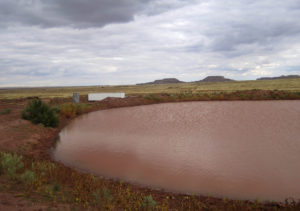
Easy Property Access
TBR is currently accessed mostly via US Highway 180 from the south.
However, the ranch is also bordered by Interstate 40 and the BNSF railroad line to the north, both of which could easily be accessed from the ranch.
Over all, TBR has extremely easy access to national transportation lines, and has enough existing infrastructure to support any attempts to add points of access.
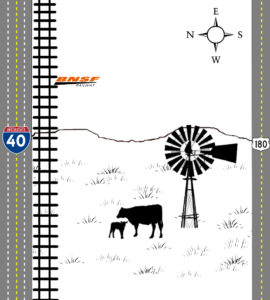
Local & State Mining Support
Towns and businesses in the Holbrook Basin have struggled economically for many years, ever since the cattle business became more and more challenging due to government regulations and droughts.
The people of Holbrook, Arizona were exceptionally welcoming towards the prospect of potash mining operations, and went well out of their way to support Passport Potash – the mining concern at the time – in any way possible.
Arizona is one of those southwestern states that has a lot of state-owned land.
In fact, back when TBR was still a part of my parents’ ranch, the ranch had the most privately owned sections in the entire state. TBR is still one of the biggest privately owned ranches in the state, but we do have several state sections.
Fortunately, though, the state of Arizona is highly favorable towards the possibility of any new mining operations, and as such they have fewer than normal regulations on the process.
While Passport Potash was conducting their test drilling we had some very positive relationships with people at the Arizona State Landing Mining Department, all of whom were just as excited as locals about the prospect of potash mining in the state.
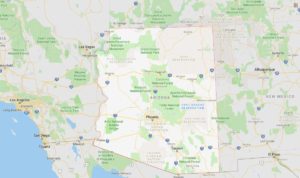
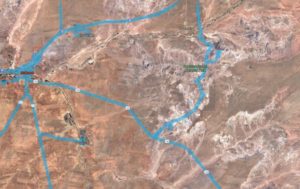
Renewable Energy
Thanks to the endless blue skies of the Holbrook Basin and the year-round southwesterly winds there’s an almost unlimited potential to generate clean, renewable energy.
The Fitzgerald Family has used a small solar setup to power their home for many years.
Only miles away from the Twin Buttes Ranch the Elkin family has already created the first Wind Power Farm in the state of Arizona.
Any clean energy created on Twin Buttes Ranch would find an easy outlet to the local power station, Cholla Power Plant, via a three-phase powerline running down the southern border of the ranch.
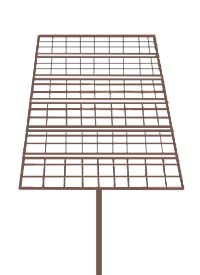
Gravel, Shale, and Rock Resources
Among the many other raw land investment resources on Twin Buttes Ranch, there’s the potential to mine gravel for industrial uses, alongside badland shale and rock which is viable for commercial development.
Woodruffe Butte – a local landmark – has seen significant amounts of gravel mined from it, primarily for use in the upkeep of gravel roads on the nearby Navajo Reservation.
That same type of gravel is abundant in areas of the Twin Buttes Ranch.
There’s also large amounts of badland shale and other rocks and stones that are suitable for uses such as interior decoration and more.
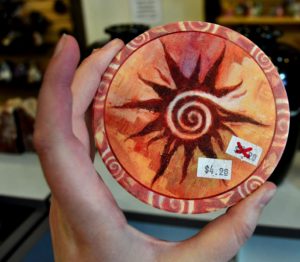
An example of sandstone similar to rock types found on TBR used to create interior decorations.
Ranching
Cattle ranching has always been the largest industry in the Holbrook Basin, and indeed throughout much of the Colorado Plateau.
Traditional cattle ranching practices have created the few fences that do exist on Twin Buttes Ranch, and such ranching has also created dirt stock tanks – also used by wildlife – and many other renewable and responsible land preservation practices.
Especially attractive is the fact that cattle are also viable alongside other operations such as renewable energy and potash mining.
Cattle can be easily fenced out of sensitive areas and left to roam the open country.
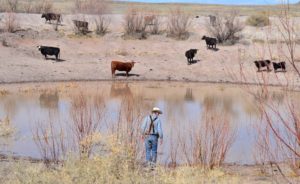
360 Degree View shed
Because the Twin Buttes Ranch is so large, encompassing 60 square miles, the view shed would be phenomenal even if there was a city nearby.
However, there is no major city nearby.
The town of Holbrook, Arizona has 5,049 residents – and is 10 miles west of the Twin Buttes Ranch.
On three sides the Ranch is surrounded by other large ranches, and it borders the Petrified Forest & Painted Desert National Parks to the east.
The resulting view shed is really phenomenal, and is one of the places left in the Southwest where you can still feel the sweeping tug of history and the powerful promise of land that is yet undeveloped and full of promise as well as beauty.
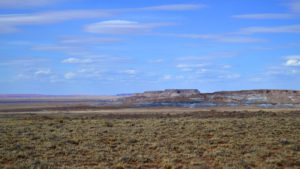
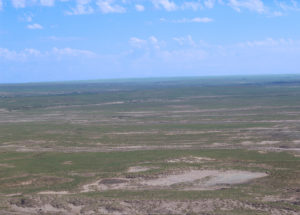
Minerals
There are other minerals in the ground of Twin Buttes Ranch – although potash is the most readily identifiable and immediately minable. Most of these mineral rights come with TBR.
One of the exceptions is the large amounts of petrified wood on the ranch.
These rights could probably be obtained by an interested owner, however the Fitzgerald Family has never pursued it. Two sections of land that border Twin Buttes Ranch have been used for petrified wood extraction, and is consequently the largest supplier of commercial petrified wood in the world.
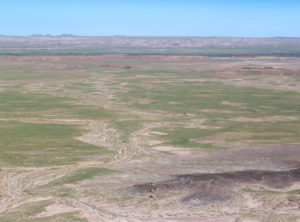
Archeological Resources
Twin Buttes Ranch has been included in several pieces of legislation to allow the Park Services to purchase it as an extension of the Petrified & Painted Desert National Parks (which borders Twin Buttes to the east).
Sadly, despite the efforts of many serious conservationists – including the Fitzgerald Family – no funds have been made available to make this dream a reality.
The many archeological, historical, and geological resources left behind on the Twin Buttes Ranch remain untouched. These include:
- Anasazi Village Ruins
- Arrowheads
- Pottery Shards
- Petroglyphs
- Petrified Wood
- Fossilized Dinosaur Bones
- Fossilized Seashells
Normally the existence of archaeological value on a property whose primary attraction is the possibility of mining would be a deterrent. Fortunately, however, the majority of the artifacts left behind by ancient Native Americans are well away from areas of the ranch that would be ideal for starting potash mines.
My personal theory (mostly based on the common sense of a man who’s run cattle out there) is that the high levels of salt in the ground and water around the potash deposits would have made it harder for a people to survive there.
As a result it seems logical to assume that the Anasazi people would have set their migration routes and settlements closer to riverbeds where fresh water could be found, and where vegetation can grow with better nourishment.
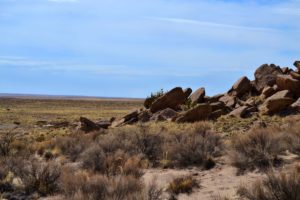
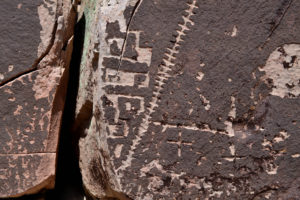
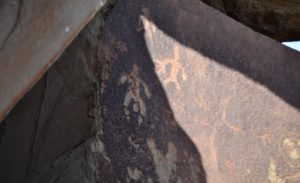
More Historic Value
Whether it’s from the recent past of the Old West – with railroad barons, gunfighters, ranching, Mormon communities, the nearby Native American reservations – or from the ancient past left behind in ruins and fossils the Twin Buttes Ranch has a deep connection with the past.
The Fitzgerald Family would love to see these important national treasures cared for – in conjunction with using the land for maximum productivity – and presented for more wide public appeal than has been possible in the past.
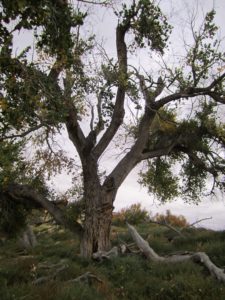
Native Wildlife
It’s important to note that Twin Buttes Ranch is not known to be home to any endangered species – although any hunting of the native pronghorn antelope population is very restricted.
Other notable native species include:
- Hawks
- Eagles
- Coyotes
- Mojave rattlesnakes
We also occasionally see some migratory species – especially in hard years – such as elk and deer from the Mogollon Rim country.
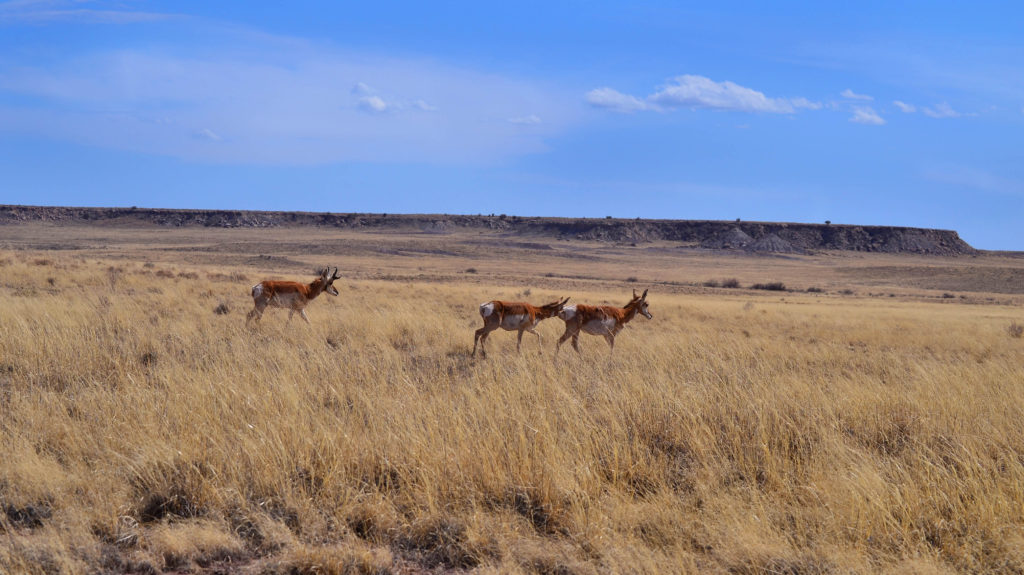
Recreation
Although Twin Buttes Ranch has always been primarily a working cattle ranch, it affords many opportunities for recreation, from photography to hunting.
The Fitzgerald Family has forbidden all hunting on the ranch for the past 20 years, and the ranch is consequently well stocked with pronghorn antelope, coyotes, and a few deer and elk which occasionally migrate from the Mogollon Rim.
The vast spaces of course lend themselves to landscape photography – especially during the spectacular sunrises and sunsets common to the Holbrook Basin.
There’re also dirt roads for four-wheeling and horseback riding.
Finally, for rock and geology enthusiasts there’s no better place to do some hiking enjoy nature’s splendor. The Fitzgerald Family has been proud to host a few of these naturalists in the past.
